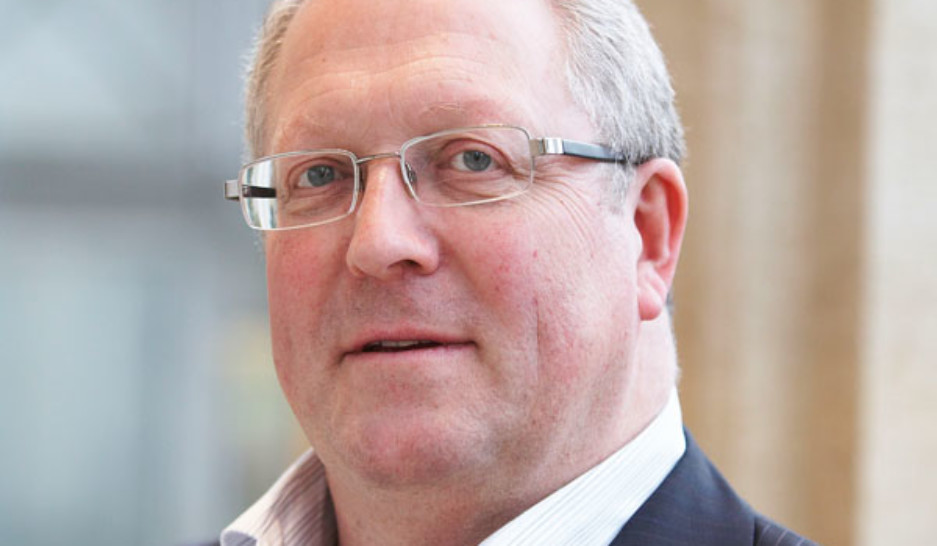We are sitting in a murky wine bar in Holborn with the sounds of Christmas party revellers and tinny music rising and falling around us, but Stephen Smith is crystal clear as ever on his thoughts on the industry.
“The challenge for brokers is to remain relevant, continually showing why you are adding value above a straightforward digital transaction,” he says.
“Even Habito in their ads, make a big point of telling you there’s a person there.”
The mortgage transaction is about home, family, money, the most critical and emotional factors in anyone’s life, which is why people will always need another person to talk to, who can understand and empathise, he says. Machines can miss things a broker can elicit, he adds.
“People say Artificial Intelligence will come on in leaps and bounds but there’s a good number of years, even decades before a robot could get anywhere near what a good adviser can do.”
Digital offers the opportunity to remove the drudge work and do a better job building relationships and offer a deeper expertise on a broader set of products, which will potentially be more lucrative, he says.
The network angle
Legal and General (L&G) closed its mortgage network in 2015 after a long transition helping broker firms move onwards, often to other networks like Mortgage Advice Bureau or Stonebridge, or turn directly authorised (DA) like The Finance Planning Group.
The network was always profitable says Smith, but I ask if digitisation is an opportunity for network models to begin making sizeable profits again?
Smith says, frankly, the issue for networks is they have to take the customers, or brokers along with them strategically to make that money.
“That’s always been the stress point for networks – brokers need to feel happy that they are getting value,” he adds.
In terms of this value, networks and broker firms that provide a layer of digitisation either created in-house or through a third-party like a sourcing system, will have an advantage. This will also be the turning point at which the wider industry starts to see the real benefits of digitisation like direct-to-lender case submission, he says.
However, advisers’ fears of being left behind if they are not part of bigger firms developing their own solutions is very real at the moment.
We agree that the press needs to cover new ideas and industry innovation but the extent of the coverage left an exaggerated impression of the potential impact of some of the newer digital advice models following a press feeding frenzy. It’s a tricky line for the media to tread, as people also want to understand the nature of these new ‘threats’ so read everything they can to understand them.
However, Smith summarises it well: “Newcastle United fan site NUFC.com never does speculation stories about signings until the deal is done, otherwise you’re just raising expectations and excitement which are unrealistic and very rarely delivered.”
Cultural exchange
Smith may be about to exit his current job title at L&G, but his last 12 months and role leading digital projects means he hasn’t been winding down.
In September, Smith and managing director of Legal and General insurance Mark Holweger went on a fact-finding mission to the US, which took in four cities and was exhausting but Smith says he’s made some friends for life.
Which city did he like the most or which made the best impression? “Frederick in Maryland, because its like Britain in the 1950s, has serious history famously with a Civil War battle and wine bars and cobbled streets. It didn’t feel like America, which is probably why I liked it,” he says.
The aim of the trip was to understand why just 5% of mortgage sales trigger protection sales in the U.S, against around 70% in the UK. Many advisers in the states stop at the mortgage qualification but there has to be an argument for higher levels of sales, says Smith.
But it will be a multi-pronged approach with a digital direct to consumer interface and relationships with mortgage banks and other U.S counterparts. Although he says, he thinks, unlocking the realtor relationship will be key.
“Nine out of ten people use a realtor in the US. Customers have realtors on speed dial and are on their Christmas and birthday card lists. They act for the buyer and are the ringmasters for the property transaction, removals, any refurbishments, the mortgage, all insurances – and they typically earn 2-3% of each transaction so you can see how they build a loyal client bank. Why can’t UK brokers do that?” says Smith.
The onward journey
Smith decided to retire sitting on the Zattere, a long promenade stretching along the southern shore of Venice’s main island. He had a glass of pinot grigio in one hand and a calculator on the table to help with the necessary sums.
He says it’s a young man’s game and according to his official L&G contract he should have retired in April but he often feels as if he could just go on and on, but laughs that no-one would probably want that.
But its not over yet in the mortgage industry with some non-executive board appointments to be announced in the New Year and the first on the L&G Home Finance Board already confirmed.
He says the Later Life Lending sector is the most interesting to him, laughing that he has an increasing interest in the welfare of older people, and adding that it also offers the most promise and “massive” opportunity. He adds there will be a lot more innovation coming from L&G Home Finance in the coming months.
Career highlights
When prompted, Smith says his fondest career moments include the setup of the Association of Mortgage Intermediaries, which delivered a “robust and highly respected” trade organisation, and adds that his career was carved by the words of a previous colleague, “surround yourself with good people.”
“I’ve had the pleasure to work with John Cupis, Ben Thompson, Jeremy Duncombe, let alone the mortgage club team, including Danny Belton and Craig Hall. On the surveying side, Steve Goodall and now MD of Legal and General Surveying Services Kevin Webb,” he says.
The mortgage club was doing £5bn when we started and the figure this year “will stagger the market” he says, adding that in the last two months it hit a “mind boggling” £6bn a month.
The secret? “Working with the best brokers in the market. I’m talking about the most successful firms as the recovery has come in mortgage lending – the most adept at diversification and adaptable to new opportunities and technology.”
And finally, Smith singles out getting the prestigious lifetime achievement award from Mortgage Solutions in 2009 as another of his best moments, although he asks if he ought to have retired immediately after that for the sake of form?
We move on swiftly.
The digital world
On PSD2 and Open Banking, originally due to start on 13 January, although five of the nine banks have asked for and been granted a month’s extension. Smith poses some interesting questions.
When Open Banking gives consumers the choice to share their financial data with a third-party, be it start-up innovator or a bank, who are you going to trust?
Uber, often used as a shining example of the promise of customer service in the digital age has achieved its position at the expense of local and UK regulations, tried to cover-up customer data breaches affecting multiple millions and taken a bullying approach to any obstacles in its way. What advantage does it give them over banks?
However, he muses, he doesn’t have a relationship with his bank anymore and hasn’t had any personal contact from them for years. Doesn’t this put banks and digital newcomers in a dead heat in the race for that data handling trust?
The biggest challenge will be presenting all these time saving services to consumers in an interesting way, suggests Smith.
“People only buy a mortgage once every two or five years so where we have been dealing with pre-MMR clients for the last few years, soon it will be helping consumers adjust to pre-and post-digital mortgage processes.”
Smith agrees however, that the threat of lenders to broker business is very real. In an era where lenders can and do waive the Early Redemption Charge and complete an online digital product transfer in two minutes, brokers are already losing this business. But, brokers have been losing vanilla product transfers to lenders for years.
Smith says ultimately, consumers need to be educated to understand the value of what they are paying for and brokers need to stretch to make sure they fulfil that service promise.
He adds: “One of the questions I’ve always pressed lenders for an answer to, and never had in public, is how much profit lenders make from a mortgage transaction.”
Informally, he says he knows its roughly an 80 to 20 split in favour of lenders compared to brokers.
It’s the essential imbalance of that payment and transaction that tells me change is coming and in the broker’s favour as long as they can rise to the challenge,” he adds.
















